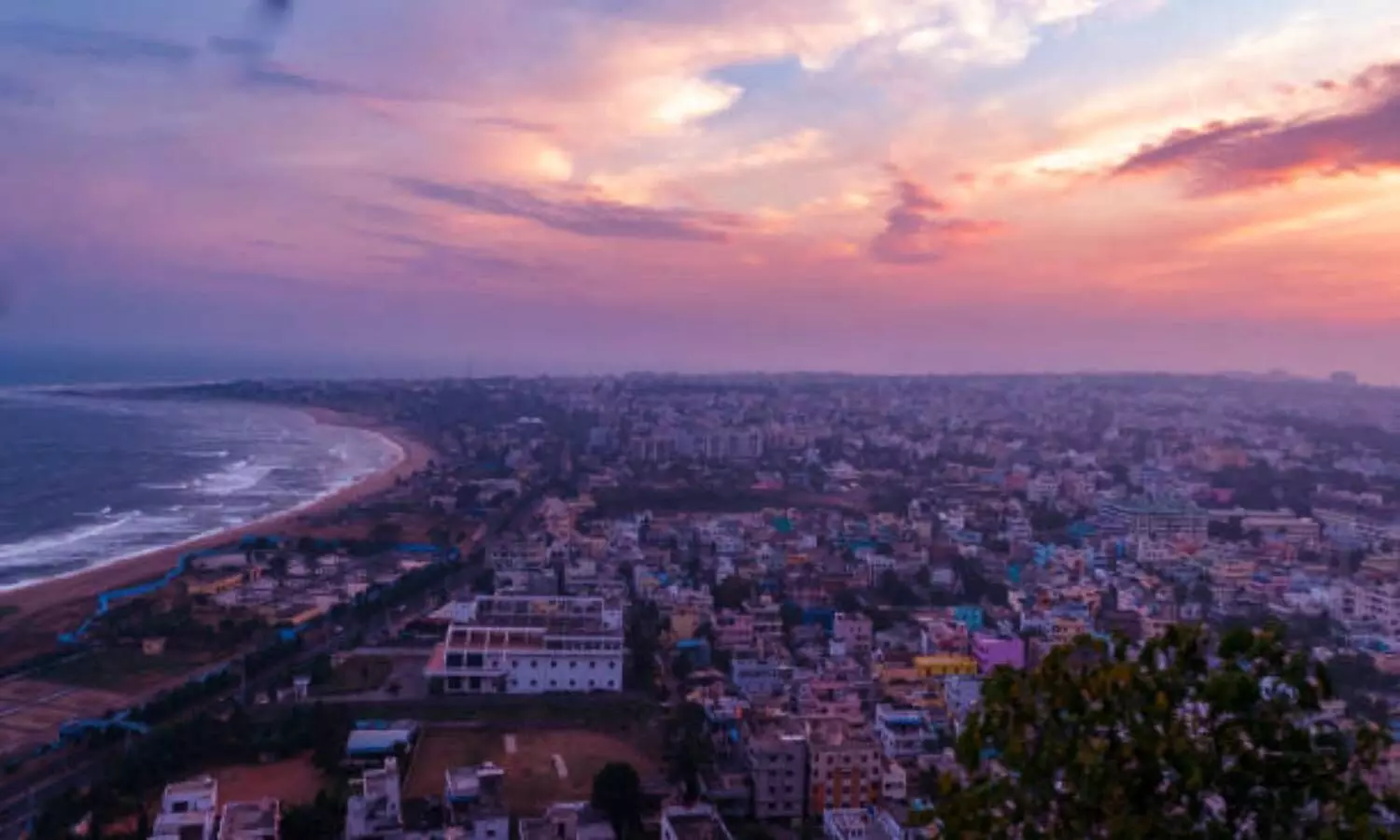AP's Vizag, Amaravati among most polluted south Indian cities: Greenpeace report
The annual PM10 levels in Visakhapatnam exceeded the prescribed WHO guidelines of 15 µg/m3 by six to seven times, while Amaravati exceeded the limit by three to four times.
By Sri Lakshmi Muttevi
Visakhapatnam: Two cities of Andhra Pradesh – Visakhapatnam and Amaravati – are among the most polluted south Indian cities as their PM2.5 and PM10 levels are far higher than that prescribed by the World Health Organization (WHO). This was according to the latest report by Greenpeace India that analysed the Central Pollution Control Board (CPCB)'s data from 10 major cities of south India.
The report revealed that average pollution levels in the cities far exceed the latest WHO guidelines.
Greenpeace India's report highlighted that more than 80% of cities and towns had PM10 levels exceeding the 60 µg/m3 limits prescribed under National Ambient Air Quality Standards (NAAQS) by CPCB in 2018.
Greenpeace India analysed the air quality data of 10 south Indian cities – Bengaluru, Hyderabad, Chennai, Amaravati, Visakhapatnam, Kochi, Mangalore, Puducherry, Coimbatore, and Mysore. They were analyzed based on the availability of data, population, and monitoring station networks. It was found that despite pandemic-induced lockdowns and subsequent reduction in economic activities, the annual average values of PM2.5 and PM10 exceeded WHO revised standards by many folds.
Data by the Central Pollution Control Board (CPCB) official dashboard Central Control Room for Air Quality Management reveals that PM2.5 levels in Visakhapatnam exceeded WHO guidelines by seven to eight times, while Amaravati recorded PM2.5 levels exceeding the WHO limits by six to seven times.
The annual PM10 levels in Visakhapatnam exceeded the prescribed WHO guidelines of 15 µg/m3 by six to seven times, while Amaravati exceeded the limit by three to four times. As per the study, the primary contributors to worsening air quality are fossil fuel-powered infrastructural development, industries, transport, waste burning, and construction activity. Chronic exposure to air pollution increases the likelihood of asthma, low birth weight, depression, schizophrenia, diabetes, stroke, lung cancer and can cause premature deaths.
Commenting on the analysis, the campaign manager of Greenpeace India Avinash Chanchal said, "The data shows that lockdown is not a solution to air pollution. Relatively lesser economic activity and vehicles are also putting us in a dangerous position. We have to prioritize the immediate shift to clean energy and clean transport to stop more damage."
As per the study, the majority of the population in these cities is already using public transport or sustainable ways of transportation. But the infrastructural focus is still on private vehicles. Efforts and lifestyles of the masses must be appreciated and encouraged as they are contributing to making our cities sustainable.
Solution
The authorities must start the conversation with local residents, describe the health and financial problems of air pollution in their region and present the solutions, the study suggested. Governments must lead with policy and system-wide changes while supporting residents to make personal steps that benefit air quality. India's Central Pollution Control Board (CPCB) must introduce new national ambient air quality standards (NAAQS) based on the updated WHO air quality guidelines which are based on the latest scientific understanding.